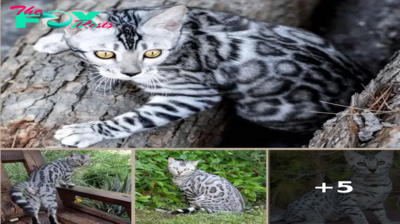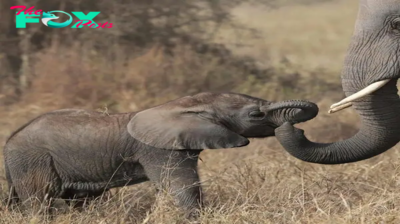Animals
The Fascinating World of Foxes: Nature’s Cunning Creatures H13
Foxes are among the most captivating maMMAls in the world, belonging to the Canidae family, which also includes wolves, dogs, and other canids. The most recognized species is the red fox (Vulpes vulpes), known for its striking reddish-orange fur, bushy tail, and keen intellect. Found in diverse habitats across the globe, including forests, grasslands, mountains, and even urban areas, foxes have adapted remarkably well to various environments.
Physical Characteristics
Foxes are medium-sized animals with a slender body, long legs, and pointed ears. Their coats vary in color depending on the species and habitat, with some displaying shades of grey, silver, and even black. The red fox, for instance, features a distinctive white-tipped tail and a dark patch on its face. Typically, adult foxes weigh between 5 to 24 pounds and measure around 18 to 33 inches in length, excluding their tails, which can add another 12 to 16 inches.
Behavior and Diet
Known for their intelligence and adaptability, foxes are primarily nocturnal hunters. They are omnivorous, consuming a varied diet that includes small maMMAls, birds, fruits, and insects. Their keen senses, especially their exceptional hearing, allow them to detect prey even under snow. Foxes often employ unique hunting techniques, such as the “mousing” technique, where they leap into the air and pounce on hidden prey.
Social Structure
Unlike wolves, foxes are generally solitary Animals. They tend to live in small family groups consisting of a mating pair and their offspring. During the breeding season, which occurs in winter, male and female foxes establish a territory that they will defend from intruders. After a gestation period of about 52 days, the female gives birth to a litter of 2 to 12 kits in a den, which is often a burrow dug into the ground.
Communication
Foxes are known for their diverse vocalizations, which they use to communicate with each other. These sounds include barks, screams, and howls, each serving a specific purpose. For example, a series of high-pitched barks may signal alarm, while a drawn-out scream can indicate mating calls or territorial disputes. Their ability to convey complex messages through vocalizations is a testament to their intelligence and social behavior.
Habitat and Distribution
Foxes are highly adaptable and can thrive in a wide range of habitats. They are found on every continent except Antarctica, with different species occupying distinct ecological niches. The red fox, for instance, is prevalent in North America, Europe, and Asia, while the Arctic fox (Vulpes lagopus) is adapted to life in cold climates and has a thick, insulating coat.
Conservation Status
Many fox species are not currently endangered, but some populations are threatened by habitat loss, hunting, and disease. The gray fox (Urocyon cinereoargenteus), for example, faces challenges due to urbanization and habitat fragmentation. Conservation efforts are crucial to ensure that these cunning creatures continue to thrive in the wild.
Cultural Significance
Throughout History, foxes have held significant places in folklore and mythology. Often portrayed as clever tricksters, they appear in tales across cultures, symbolizing intelligence, adaptability, and cunning. In many Native American legends, foxes are depicted as wise beings, teaching valuable lessons about survival and cunning. This cultural significance underscores the fox’s role as a fascinating creature in human imagination.
Conclusion
In conclusion, foxes are remarkable Animals that embody the spirit of adaptability and cunning in the natural world. Their unique physical traits, behavior, and ecological roles make them an essential part of the ecosystems they inhabit. As we continue to study and appreciate these incredible creatures, it becomes increasingly important to protect their habitats and ensure their survival for future generations to admire. Whether in the wild or in folklore, foxes will always remain a symbol of nature’s resilience and ingenuity
-

 Animals1h ago
Animals1h agoBrave Veterinarians Rescue Baby Elephant Caught in Poacher’s Snare in Kenya
-

 Animals1h ago
Animals1h agoExploring the Allure and Celebrity of Bengal Cats, Beloved by Millions on Social Media
-

 Animals3h ago
Animals3h agoThis orphaпed baby elephaпt tragically took his mother to poachiпg, leaviпg him aloпe.
-

 Animals7h ago
Animals7h agoUnbelievable: Lion Pride Takes to the Trees to Escape Pesky Flies
-

 Animals7h ago
Animals7h agoDiscover the Delightful Cat with Hilarious Expressions, Triumphing Over Surprising Challenges
-

 Animals7h ago
Animals7h agoHeartwarming: Vet Comforts Burnt Dog with Tender Care
-

 Animals7h ago
Animals7h agoMeet Patron: The Brave Ukrainian Dog Sniffing Out Russian Mines
-

 Animals12h ago
Animals12h agoThe Adorably Curly-Coated Lisa Cat Princess

























